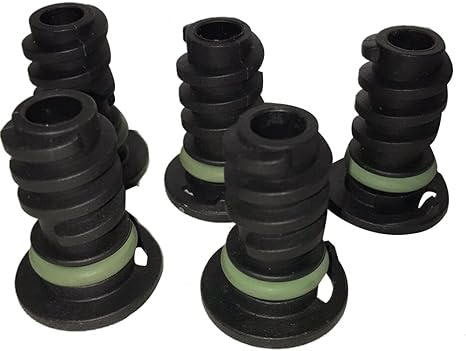seals it inner axle seals
Understanding Inner Axle Seals The Key to Vehicle Performance
When it comes to maintaining the integrity of your vehicle's drivetrain, inner axle seals play a crucial role. These seemingly small components are vital for ensuring that your vehicle operates efficiently and maintains longevity. In this article, we will delve into the importance of inner axle seals, their function, signs of failure, and the steps involved in their replacement.
What Are Inner Axle Seals?
Inner axle seals, often referred to as axle shaft seals, are rubber or silicone components that prevent the leakage of differential fluid from the axle housing. They are positioned at the point where the axle shaft enters the differential and serve as a barrier against dirt, debris, and water, which can all lead to significant damage over time if not properly sealed.
Importance of Inner Axle Seals
The primary function of inner axle seals is to maintain the proper lubrication within the axle assembly. By keeping differential fluid contained, these seals ensure that all moving parts within the differential remain sufficiently lubricated. This lubrication is critical for reducing friction, preventing wear and tear on components, and ensuring smooth operation. Without effective seals, you risk not only the loss of lubricating fluid but also the intrusion of harmful contaminants that can compromise the whole system.
Signs of Seal Failure
Over time, inner axle seals can wear out due to heat, pressure, and exposure to various elements. It’s important for vehicle owners to recognize the signs of seal failure, which may include
1. Fluid Leaks One of the most obvious signs of a failing inner axle seal is the appearance of fluid leaks beneath your vehicle. If you notice a red or brown puddle under the axle area, it’s likely that the seal is compromised. 2. Increased Noise A failing seal can lead to a lack of lubrication, resulting in increased friction and noise from the axle. If you hear grinding, whining, or clunking sounds when driving, it could indicate a seal issue.
3. Poor Handling If your vehicle feels unstable or there’s a noticeable change in handling, it could be due to differential fluid loss affecting your axle performance.
seals it inner axle seals

Replacing Inner Axle Seals
If you suspect that your inner axle seals are failing, it’s crucial to address the issue promptly to avoid more extensive damage. Replacing inner axle seals typically involves
1. Removing the Wheel and Brake Components This provides access to the axle assembly.
2. Disconnecting the Axle Shaft Carefully detach the axle shaft from the differential, following manufacturer guidelines.
3. Removing the Old Seal Using a seal puller or a similar tool, carefully remove the old seal without damaging the surrounding area.
4. Installing the New Seal Ensure the new seal is seated properly before reassembling the axle shaft and components.
5. Reassembling and Testing Reattach all components, refill any lost fluids, and conduct a test drive to ensure everything is functioning smoothly.
Conclusion
Inner axle seals may be small, but their role in the performance and longevity of your vehicle is significant. Regular maintenance and prompt attention to the signs of wear can help safeguard against costly repairs down the line. By understanding the function of these seals and ensuring their proper care, you can enjoy a safer and more dependable driving experience.
-
Understanding the Front Main Engine Seal: Purpose, Maintenance, and Installation
News Jul.29,2025
-
Understanding O-Rings and Seal Rings: Types, Applications, and Custom Solutions
News Jul.29,2025
-
Understanding Crankshaft Oil Seals: Rear Seals, Pulley Seals, and Their Role in Engine Integrity
News Jul.29,2025
-
The Importance of Front and Rear Crankshaft Seals in Engine Performance and Oil Management
News Jul.29,2025
-
Crank Oil Seals: Functions, Types, and Cost Considerations in Engine Maintenance
News Jul.29,2025
-
A Comprehensive Guide to O-Rings and Seals: Types, Materials, and Global Applications
News Jul.29,2025
-
Mastering Diesel and Performance Engine Maintenance: A Guide to Critical Oil Gaskets
News Jul.28,2025
Products categories















